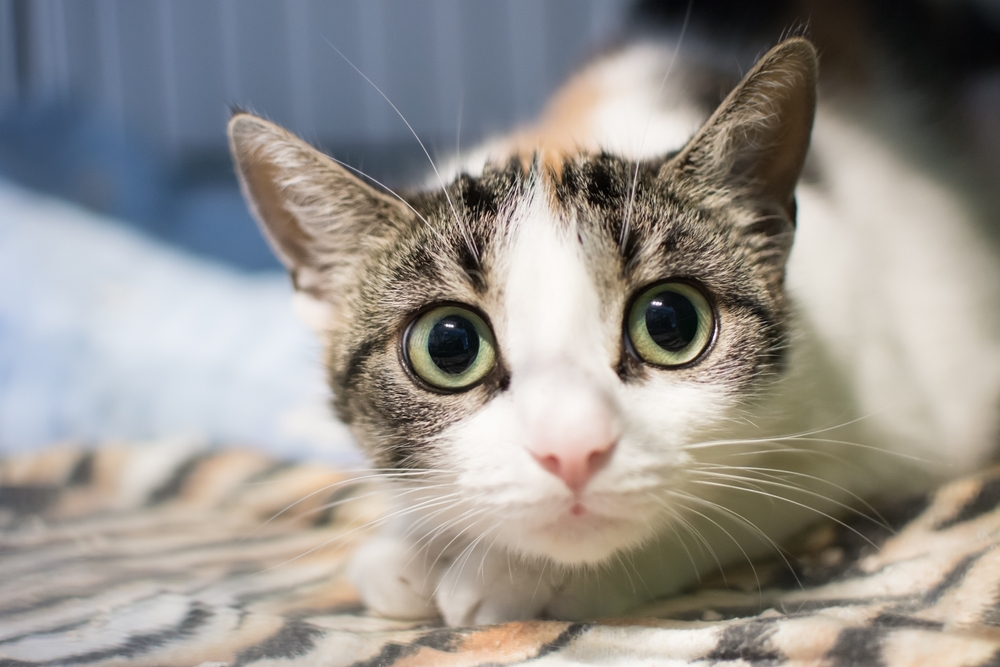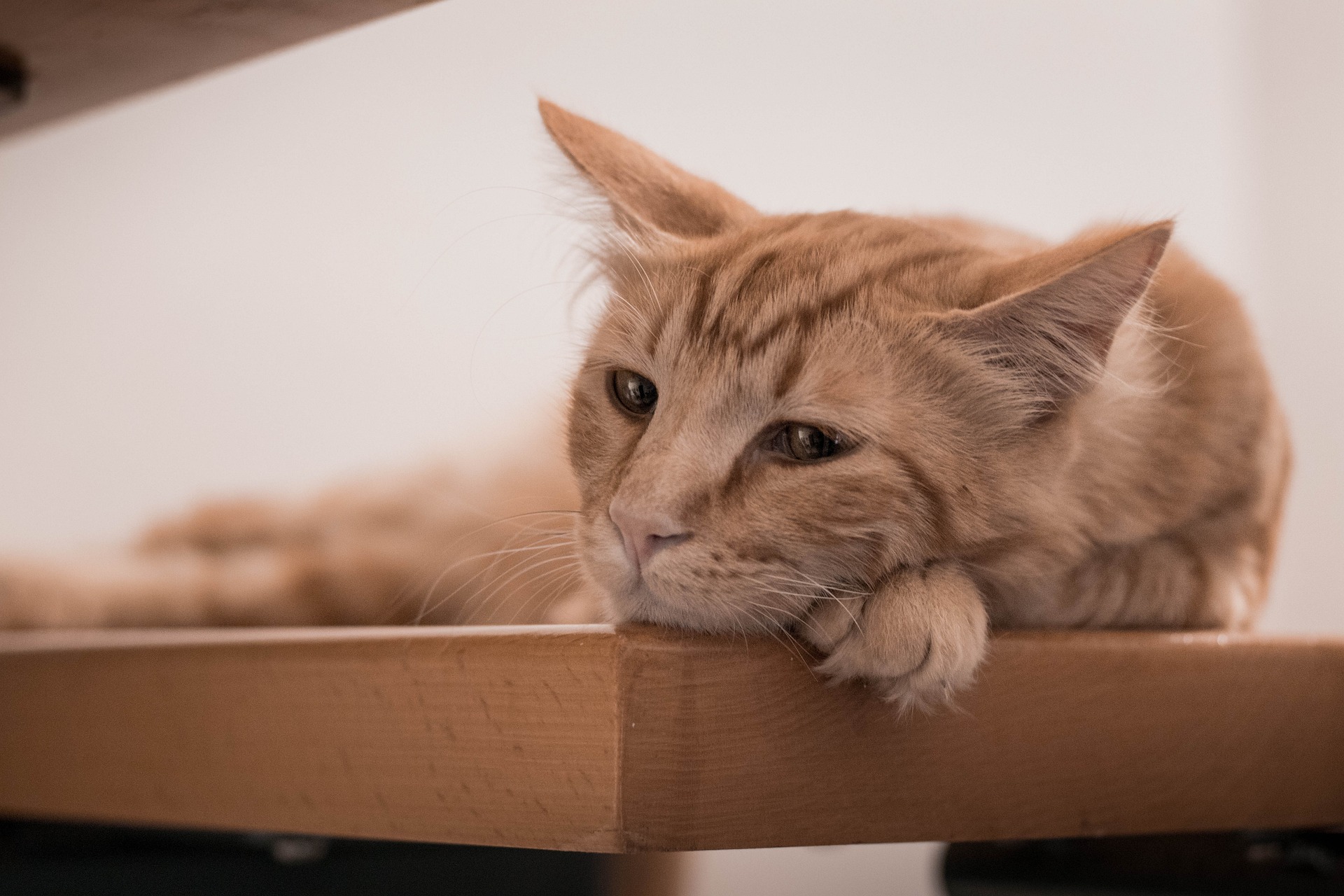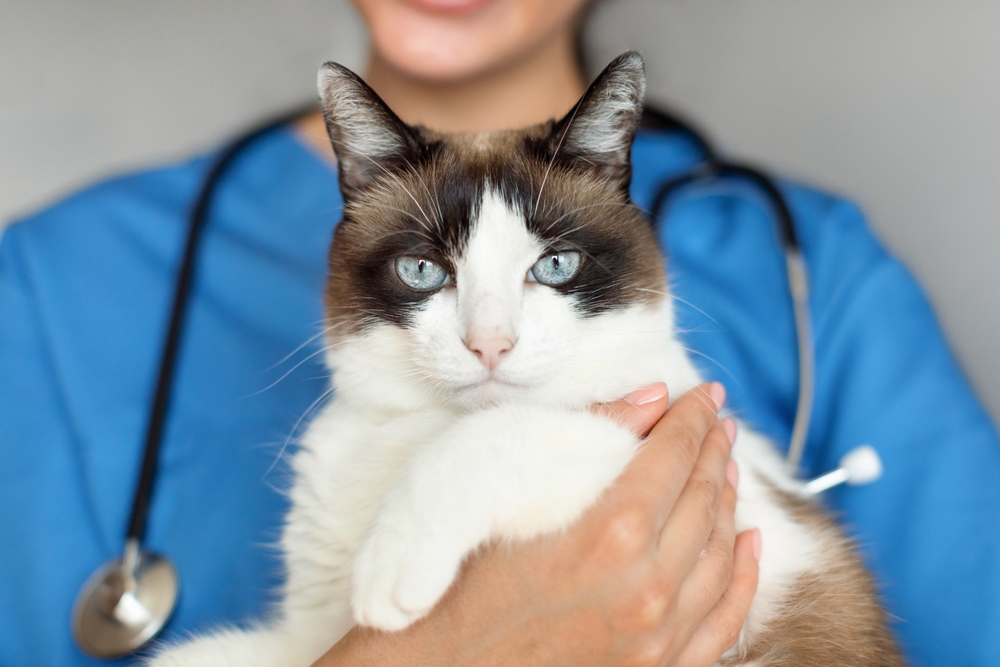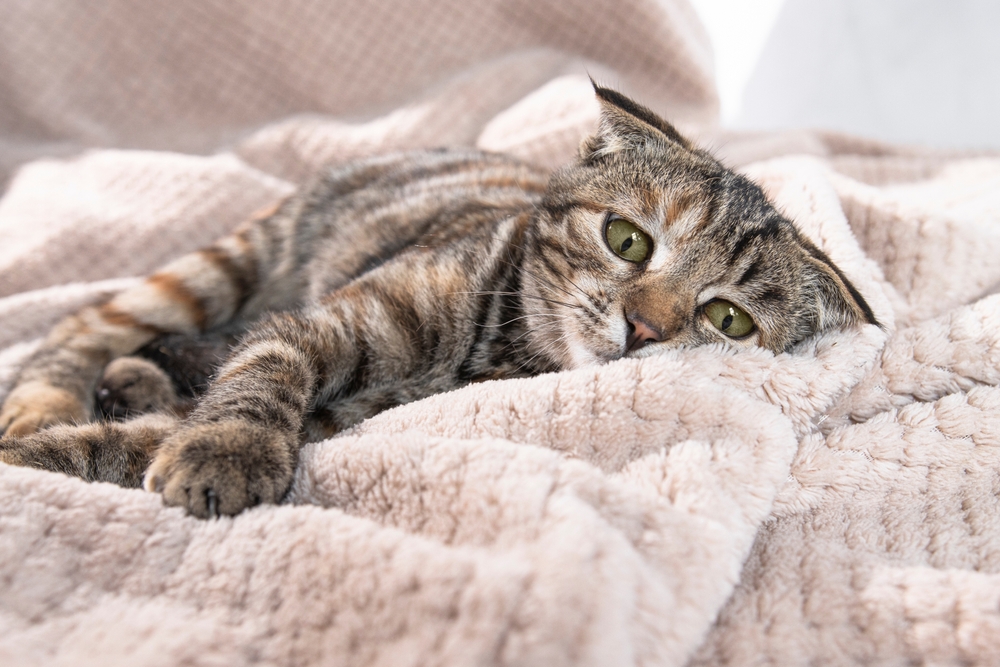Whereas the jitterbug could have been a preferred swing dance amongst people, it’s vital to do not forget that cats don’t usually jitter, the dance or in any other case (to a sure extent—cats can shiver if they’re frightened or chilly). So, in case you discover that your cat is trembling, jerking, shaking with each motion, or having issue sustaining their stability, it’s time for a check-up along with your veterinarian.

What Are Tremors in Cats?
Tremors in cats are normally involuntary and rhythmic muscle contractions that result in shaking or trembling in several areas of a cat’s physique. The depth of the tremors can differ from delicate, wonderful tremors to extra pronounced shaking, which can impression a cat’s mobility and stability. The frequency and length of tremors also can differ. If episodes worsen over time, there could also be an underlying medical difficulty that necessitates veterinary consideration.
💛 😺 Converse To a Vet On-line From the Consolation of Your Sofa!

If it is advisable communicate with a vet however can’t get to at least one, head over to PangoVet. It’s a web-based service the place you’ll be able to discuss to a vet on-line and get the personalised recommendation you want to your pet — all at an reasonably priced worth!
What Are the Indicators of Tremors in Cats?
Cats can expertise tremors in several methods, together with ones that have an effect on their limbs, paws, head, or total physique. Tremors could happen intermittently or persist for longer durations of time, and their depth can differ. They could manifest as involuntary shaking, trembling, quivering, shivering, vibrating, wobbling, or head bobbing. Felines experiencing tremors might also exhibit an absence of coordination, hassle balancing, or struggling to stroll or run. Different indicators to be careful for embrace modifications in vocalization, elevated agitation, and irregular or uncommon conduct.

What Are the Causes of Tremors in Cats?
Tremors in cats may be the results of numerous elements, together with neurological problems, damage, an infection, metabolic points, stress, and publicity to toxins like sure crops, chemical compounds, or medicines.
Infectious ailments or systemic infections, reminiscent of feline infectious peritonitis, can have an effect on the nervous system, resulting in tremors. Neurological harm from bodily trauma or damage, reminiscent of a fall or blow to the top, also can harm the nervous system and result in tremors. Kittens may be born with congenital points like cerebellar hypoplasia, which impacts their charge, vary, and rhythm of movement.
A typical metabolic difficulty in cats that may trigger tremors is hyperthyroidism. This situation includes the overproduction of thyroid hormones, which may trigger trembling. Circumstances like epilepsy also can trigger seizure exercise that seems as tremors. Low blood sugar, or hypoglycemia, can lead to tremors, because the cat’s physique is working arduous to keep up sufficient power ranges.
Along with metabolic points, different causes of tremors in cats embrace excitability and anxiousness. Stress can set off anxiousness, which can manifest as shaking. It’s additionally price noting that some cats could begin trembling even whereas at relaxation.

How Are Tremors Recognized in Cats?
In the event you observe your cat trembling or shaking in an uncommon method, search analysis and care from a professional veterinarian. They’ll go over your pet’s medical historical past, which can embrace the onset, frequency, and length of the tremors, any latest modifications to the cat’s surroundings or weight loss plan, and any earlier well being points. The vet can even conduct an intensive bodily examination to evaluate your cat’s situation, together with a neurological examination to gauge operate.
They could suggest diagnostic procedures, reminiscent of blood checks to search for metabolic problems, infections, or toxin publicity, and imaging research, reminiscent of X-rays or ultrasound, to search for any abnormalities and to assist formulate an correct analysis. In some circumstances, it might be vital for the veterinarian to gather a pattern of cerebrospinal fluid or have your cat endure an MRI to assist in figuring out the reason for the tremors.

How Do I Look after a Cat With Tremors?
Whatever the analysis, you’ll must intently comply with the veterinarian’s suggestions and therapy plan. This may occasionally contain giving medicines, making dietary modifications, or attempting different therapies to assist forestall or scale back tremors in your cat. Make sure you attend follow-up appointments to observe your pet’s progress. Retaining an in depth file at house of the frequency and length of the tremors and any triggers that you’ve noticed can assist your veterinarian assess the effectiveness of the therapy.
Create a secure and cozy house at house by eradicating hazards like sharp objects, blocking fall hazards like stairs, and stopping entry to swimming pools. Be sure that your cat has quick access to meals and water. Comfortable bedding or padding can assist ease any falls resulting from unsteadiness.
To assist your cat keep relaxed, create a peaceable and safe house for them. Utilizing pheromone diffusers and gently taking part in classical music may be efficient in soothing nervous or anxious felines. Offering toys and making certain that there are sufficient hiding spots to your cat can assist scale back their stress. Partaking your pet in common train periods also can promote bodily exercise and psychological stimulation.
 Ceaselessly Requested Questions (FAQ)
Ceaselessly Requested Questions (FAQ)
Are Sure Breeds of Cats Extra Susceptible to Tremors?
Sure, genetic elements could play a job within the improvement of tremors. Breeds just like the Abyssinian, Siamese, Persian, and Burmese have a better predilection to neurological problems and tremors like feline hyperesthesia syndrome (twitchy cat syndrome).

Can My Cat’s Tremors Be Critical?
Sure, relying on a number of elements. Tremors occurring together with different indicators, reminiscent of confusion, disorientation, lethargy, lack of urge for food, or issue strolling, want immediate veterinary consideration.
 Conclusion
Conclusion
Tremors are involuntary and rhythmic muscle contractions that may seem as shaking, trembling, jerking, or wobbling. They are often brought on by neurological problems, dysfunction, damage or harm, metabolic problems, or toxin publicity. It is suggested to hunt immediate veterinary consideration for a analysis. The sooner a tremor is detected and handled, the higher high quality of life your cat may have.
Featured Picture Credit score: Elena Rozhenok, Shutterstock




